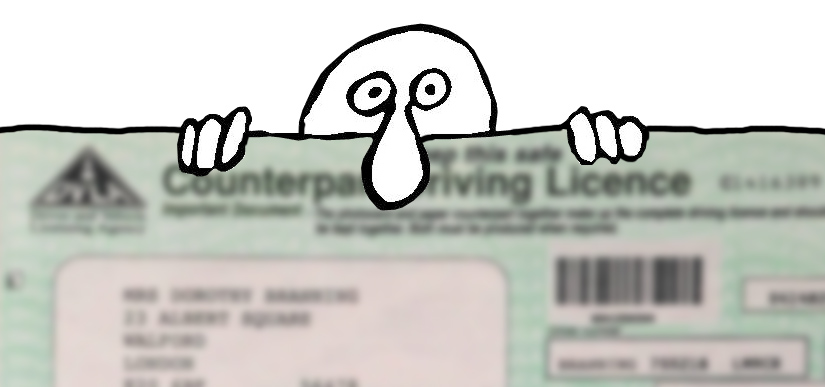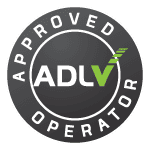What, no Counterpart? A look back at the last 7 days of the DVLA changes.

The past week has been a landmark in the history of the UK driving licence with the abolition of the counterpart.
As of 08/06/15 the UK counterpart became invalid and this gave rise to a lot of questions and speculation around the changes. As the paper tax disc went in October 2014 (amidst confusion and system crashes) we look at how things have gone in the past 7 days of the licence changes.
Recent changes
Most notably the new DVLA web services have been implemented to handle the change by allowing drivers and employers/hire car companies the ability to view driving licence data online. This was meant to be a simple and effective solution to replace the paper version of the licence where the endorsements are shown.
Main observations
- The system crashed on the first day due to an overload of traffic, and several times over the course of last week (see Guardian report here)
- The new platform requires all drivers to register and then generate a one-time use code which lasts 72 hours to give to their employer or rental company
- The companies then need to use the driving licence number of the driver combined with this one-time code to access the live driver record
- People travelling have struggled with the code expiring when flying abroad and not being able to prove their licence status
- Reports have shown that the new ‘driver view’ (called View Driving Licence) is being abused by employers and hire companies in a bid to sidestep the access code route – which is breaking data protection laws for personal data access
Driving Monitor have polled its customers to find out which key questions are being raised the most, and have found the following top 5 questions:
- Will I be able to check my employees’ licences using the new DVLA system as we have more than a handful of drivers?
- Does the DVLA system give me any management reports as to the status of my drivers across the business, or is this a one-time view of a single driver?
- If this is a free service, how much will it cost me in admin staff time to operate?
- Does the DVLA service provide alerts or notifications as to points offences on licences?
- Do I need to consider any data protection issues for checking employee licences or can I use the new ‘View Driving Licence’ as an employer on behalf of the driver?
In response to these questions Driving Monitor have produced a series of free video guides to give UK fleet managers the inside track on what to look out for when using the new digital services. These video guides are also accompanied by a free guide download document, which sets out the different options for the digital services.
The road ahead
Now that the dust has settled on the counterpart abolition there are still key elements that remain to be cleared up in these new unchartered waters. It’s clear there is still confusion around the systems and processes fleet managers can use and hire car companies also have many questions unanswered.
The main areas of concern lie in the data protection issues that arise from accessing personal data without the consent of the individual. In the UK the Data Protection Act 1998 governs the principles by which personal data needs to be managed. The rules around personal data usage state that for an employer or third party to be able to access this personal information, the individual needs to give consent for this data exchange. Traditionally with driving licence checks an employee would either sign a consent form for their employer to check their licence, or they would agree to show their counterpart to a third party such as a hire car company.
The DVLA have built 2 web platforms for this process to be managed:
- View my Driving Licence (VDL)
- Share my Driving Licence (SDL)
View my Driving Licence
The VDL system is designed for UK individuals to be able to logon and view their own driving licence now that the counterpart is invalid. The idea being that you can check to ensure you have your correct current address on file and to view the categories you are entitled to drive, along with any endorsements you may have. If you believe your motor insurance premium is weighted incorrectly you can in theory see your live points by logging in to the system.
Share my Driving Licence (Beta)
The SDL system is designed to allow third parties (such as an employer or a vehicle rental company) to view an individual’s licence at a snapshot in time. This is done using a one-time code a driver generates using VDL and this code lasts for 72 hours.
Access issues
As with any system it can always be abused. Reports have shown that a large number of access enquiries on the VDL system are not actually from the individual themselves. Employers have been using the VDL system without the consent of the individual and accessing the licence data without a code having been generated. This is possible, as many employers already know an employee’s National Insurance number, postcode and driving licence number. The DVLA clearly state on their website, “It’s a criminal offence to obtain someone else’s personal information without their permission”. However this has not stopped many organisations using this service and breaching data protection laws.
The DVLA are due to release the new Identity Verification system next month called GOV.UK Verify (See rollout plans here) to close down these loopholes in security. This will also mean only the individual will be able to access their own licence record – and the third parties will need to use the proper methods of either the DVLA premium rate phone line or the SDL service.
Kevin Curtis, Managing Director of Driving Monitor commented, “It’s surprising that the DVLA have put live the VDL service without implementing the GOV.UK Verify system to guarantee the security of personal data. I understand the DVLA have been under pressure since the delayed launch was moved from January 2015, however when it comes to personal data security we cannot afford to risk personal data breaches with such sensitive information.
We as an organisation work to very high standards of data security, and are governed by the code of conduct within the ADLV and have to be ISO27001 accredited as a minimum. It seems the DVLA are pushing the boundaries of what is acceptable (regarding data security) in a race to meet targets laid down by central government.
Driving Monitor along with all other members of the ADLV need to ensure all sensitive personal data is fully secure and we need to ensure all drivers have given explicit consent for licence checks to be carried out. We are independently audited as well as audited by the DVLA. This does seem rather reckless. If the GOV.UK Verify system is due to be implemented shortly, why not get this working to give everyone peace of mind on the rollout of SDL & VDL?
Kevin also went on to say, “If an employee thinks their licence data has been viewed without their consent they should ask their employer how this has been implemented. The employer would need to show evidence of a clear consent process, agreed and signed off by the driver, with a date and time of the declaration. Employers need to be careful if they are considering using the VDL service without obtaining an auditable consent given by the employee. Worse still if a disgruntled employee leaves a business and knows their licence was checked without their consent, they could cause serious problems for that employer.
Most organisations are aware of data security and even the thought of an investigation by the Information Commissioner for a breach of the Data Protection Act is enough to halt these actions. A ‘blot on their copybook’ can be a serious hindrance when it comes to tendering for contracts and they would want a clean record.
One final area of concern is printing the results of the VDL web page or using the PDF document that can be printed from the VDL system. Most people know you can simply alter a web page or PDF with a few clicks, so employers need to make sure they don’t use these printouts as the actual evidence – as these are not acceptable forms of proof. Only by logging in to the VDL service can you get the actual live up-to-date licence view or use one of the licence checking suppliers available via the ADLV.
Kevin Curtis went on to say, “One of the main areas of confusion we’ve found talking to customers is that the DVLA’s new platform negates the need for any ongoing licence checking system – however it’s clear this one-time free check service that’s on the DVLA website is completely different to the risk management solutions available from ADLV approved suppliers.
There needs to be a distinction from the service that the DVLA are providing and the services that companies such as Driving Monitor offer fleet and Health & Safety managers. The new DVLA ‘Share My Licence’ service just launched this summer only offers a single view approach and relies on the driver registering for the service (and soon drivers will also need to go through the government gateway ID verification platform). Once a driver has been through this process (10 mins) they would then activate a one-time use code for their employer to use. They would then need to print a form to give to their employer, which then starts the process of the employer needing to access the web service. The employer would then need to access the DVLA portal with the one-time use code to verify the driving licence (a further 5 mins).
What will become apparent very quickly is that employers will not want their drivers taking up valuable time going through an online approval process to register, then to generate a one-time use code that needs to be handed to the employer. Fleet managers also need to understand that the new DVLA service is not designed to give any ‘management’ reporting or any view across more that one employee.
Companies such as Driving Monitor offer a completely managed service, from collection of consent to full web dashboard and automated reports on licence status, points, categories and entitlements.
We find that when a company has more than a handful of drivers the need for an auditable report to cover their Duty of Care comes into play. Fleet managers are far more savvy these days and understand the importance of combining their licence checks with other safety checks such as risk assessments and telematics data. They are demanding integrated services to take the burden away from their admin teams and this is where companies such as Driving Monitor add real value.”
A look at the new systems
Driving Monitor will be reviewing the new systems available live on stage this week and giving a series of seminars at the ExCeL stadium in London (Safety & Health Expo in London on 16th, 17th & 18th June 2015). For live session times and to register your place for the demos you can visit the events zone at www.DrivingMonitor.com/events.
To access the free video guides and top tips downloads you can visit:
www.driving-licence-checks.co.uk/free-guide

